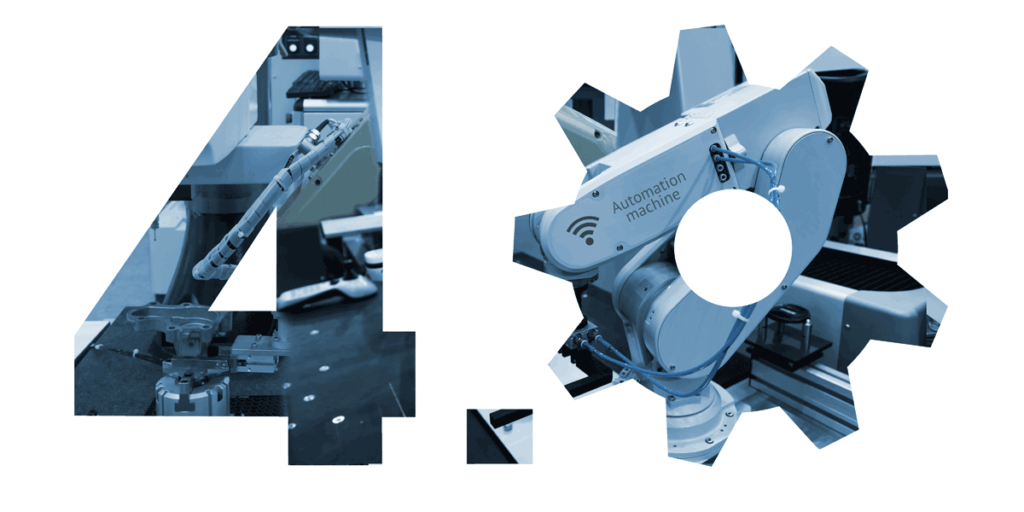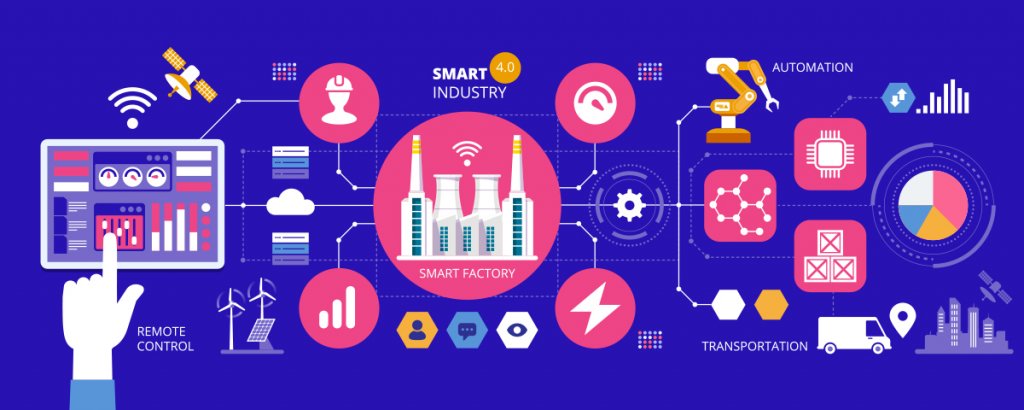What is IIoT and Industry 4.0?

In the (industrial) Internet of Things (I)IoT, production processes, supply chains, business processes, services and product life cycles all have to be designed with efficiency, adaptability and transparency, all whilst individual customer needs are taken into account. It is not without reason that we speak of a fourth (industrial) revolution in this context.
What exactly is (I)IoT? What role does it play in connection with Industry 4.0 and what impact does all this have on your business processes?
The interrelation between IIoT and industry 4.0The industrial development of the last 200 years has already seen three revolutions:
|
Due to the emergence and spread of the Internet in combination with increasing computing power, we have been at the beginning of a new industrial transformation for several years. As with the three previous ones, a revolutionary renewal is expected.
This will bring about so-called cyber-physical systems as the basis of Industry 4.0 through comprehensive digitization and networking via the Internet. Such systems, equipped or extended with machine intelligence, can decide and execute actions autonomously. The basis of this development is a corresponding networking of these digital worlds in an expanded Internet of services and things.
 Four industrial revolutions lead to the Internet of Things
Four industrial revolutions lead to the Internet of ThingsWhat is IoT?
The Internet of Things (IoT) links physical and virtual objects so that they can interact and collaborate through information and communication technologies. Another essential component is human interaction with these networked physical and virtual objects.
What is IIoT?
The so-called Industrial Internet of Things (IIoT) forms the networking of these systems. From small devices and cooperating robot systems to entire factories, these can communicate with each other in a machine language embedded in company-wide business processes. In the Industrial Internet of Things, new services and business models are created around networked products, devices and machines. To this end, new IT landscapes are being created that digitize and significantly change the architecture, capabilities and services from systems to companies and ecosystems. Edge devices, IoT platforms and data hub environments form the backbone of continuously networked digital value chains.
What is Industry 4.0?
The term Industry 4.0 is a picture of the future of production that cannot be described precisely today. How radically cyber-physical systems will change our world and industry lies in the creative ability of many participants, not only technical suppliers and users.
The advantages of Industry 4.0 are:
- Possibility of decentralized optimization and individualization
- Transparency of processes and through the networking of these, also an
Optimization of entire value creation networks
The role of data and process integration on the way to industry 4.0
To achieve this productivity, however, new forms of interaction and collaboration are needed, made possible by increasing digitalisation and interconnectedness of the entire production process. Data and process integration is a major challenge for IIoT. The basic prerequisite for the transformation to Industry 4.0 is the IT-based automated interaction of all (technical) systems, applications, services and things in a company.
 IIoT- the IT-based automated interaction of systems, applications, services and things.
IIoT- the IT-based automated interaction of systems, applications, services and things.This applies to internal company processes as well as to connections to external business partners. More and more data users and producers are becoming part of the product life cycle and require cross-functional and cross-company integration solutions. For some years now, concrete efforts have been underway to implement this transformation, which has consequences for products and processes. The following examples illustrate the potential of IIoT to make processes simpler and more efficient and the opportunities it offers for new business models:
How IIoT changes business processes
| Product Development | The efficiency of customer-related product development is massively increased by the digital twin as a representation of products in use. Thus, requirements from the entire product life cycle are recorded. Starting with product design and product creation to maintenance, service and modernization of products and systems, customers as well as suppliers and partners are continuously integrated into the process to ensure quality and availability. |
| Production | The manufacturing of products is geared even more closely to customer needs, while at the same time the increasing complexity of products leads to equally complex planning and production processes. The close cooperation during production planning cycles with (equipment) suppliers as solution providers extends to the processes of execution/adaptation and maintenance. This requires continuous, IT-supported data exchange, even during ongoing production. |
| Logistics | In logistics, the requirements for transparency and adaptability are increasing. In order to be able to continuously fulfil the central tasks (right product, in the right quantity, at the right place, at the right time), logistics will integrate itself even more strongly into the entire value-added chain and transform itself into a service-oriented ‘logistics on demand’. |
| Services / After Sales | The classic sale of self-manufactured products is increasingly being replaced by new, solution-driven service business models in the context of and based on tangible goods. The services offered form an ecosystem in which products within a value chain provide data and obtain services. Investment costs are shifting to continuous fees based on benefit-oriented metrics. |
| Marketing / Sales | By merging individual processes into a personalized, end-to-end, digital shopping experience, added value is created that binds the customer to the company at an early stage and forms the focus of the company’s business activities. Marketing and Sales are responsible for the alignment of these processes in order to actively support the customer on their way to the purchase decision and to ensure the systematic recording and fulfilment of customer requirements. |
On the road to Industry 4.0, companies must upgrade their information systems to be prepared for the changes in business processes. Integration platforms are of central importance to unlock the potential of (I)IoT for business processes and provide the integration basis for new digital services and business models.
Source: https://blog.seeburger.com/what-is-iiot-and-industry-4-0/
 industry-trend6.com
industry-trend6.com
